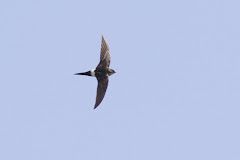




Photos from top to bottom: Grenen, Skagen (the point where the North and the Baltic seas meet) from afar and close up; the dunes (Winterton x10); an approaching thunderstorm; and the lighthouse.
Libby and I spent the Bank Holiday weekend (luckily it is not a Bank Holiday in Denmark so we managed to find accommodation at the last minute) at the northern tip of Denmark called Skagen (pronounced Skay-en). At its northern point is Grenen, the sand spit where the North and the Baltic Seas meet and fight for dominance (it is always rough, even in relatively calm weather). Skagen is also famed for its "northern light" and subsequently attracts artists from all over the country and further afield. Not content with these boasts, it is renowned as one of the best Spring migration points in northern Europe (recent records have included Black-shouldered Kite (twice), Bonelli's Eagle and Marmora's Warbler).
We stayed in a typically Danish hotel with minimalist rooms (no TV or wardrobe and all white furnishings) and spent two days exploring the area. To the south there are miles and miles of dunes and heathland stretching from the east to the west coasts - a sort of mega version of Winterton-on-Sea, Norfolk, where I grew up. And with hardly a human (or dog!) in sight. The working harbour is full of fishing boats, including lots of prawn fishing vessels. The restaurants mostly serve, you guessed it - fish - and are fantastic. The museums are full of local art from the last 150 years, much of which focuses on the landscapes and the local fishermen characters, including some famous lifeboatmen - needless to say the the point has seen many a wreck over the years.
We had a great time eating, walking and eating some more.. It seemed to be a very Danish place with very few foreign tourists around and hardly any development outside the town - it is really refreshing and typically Danish to be at a fantastically scenic point on a Sunday afternoon in August and only have two or three other groups of people for company.
All in all a fabulous place and one that I am sure I will revisit during the Spring with some birding mates... On what was strictly a non-birding trip, I still managed to sneak 5 new species to my Danish list including Mistle Thrush (162), Crested Tit (163), Arctic Skua (164), Gannet (165) and Woodlark (166).















